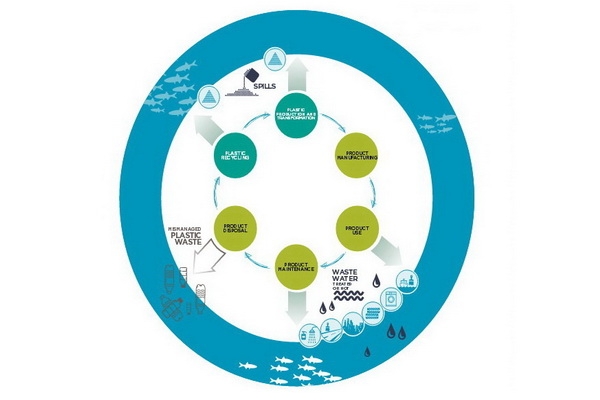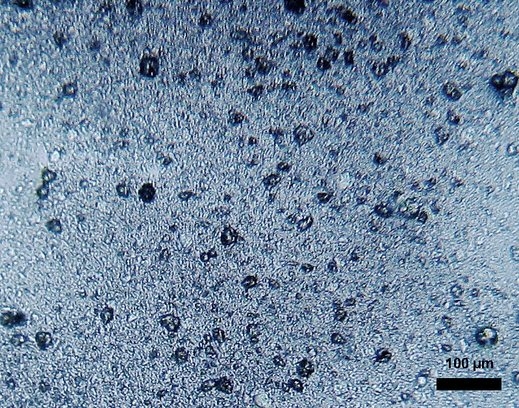
© Cycle of pollution

© Microplastics
(c) Wikipedia (Dantor)
Plastic particles from textiles and tyres – major source of ocean pollution
February 27, 2017
IUCN study highlights major causes of plastic pollution
Small plastic particles washed out of synthetic clothing and tyres may constitute as much as 30 percent of ocean pollution. They are therefore considered to be a larger source of marine plastic pollution than plastic waste in many developed countries, according to a new IUCN (International Union for Conservation of Nature) report.
The report focuses on primary microplastics, which enter the ocean as small particles. These substances are different from the plastic waste that enter the ocean as larger sized plastics and then degrade into smaller particles after some time in the water.
Sources of primary microplastics include car tyres, synthetic textiles, marine coatings, road markings, personal care products, plastic pellets and city dust.
They may comprise 15 to 31 percent of the estimated 9.5m tonnes of plastics that enter our oceans every year. Nearly two-thirds originate from the washing of synthetic textiles and the abrasion of tyres while driving.
"This report is a real eye-opener, showing that plastic waste is not all there is to ocean plastics," said IUCN Director Inger Andersen.
"Our daily activities, such as washing clothes and driving, significantly contribute to the pollution choking our oceans, with potentially disastrous effects on the rich diversity of life within them, and on human health. These findings indicate that we must look far beyond waste management if we are to address ocean pollution in its entirety."
In parts of the developed world with effective waste management facilities, primary microplastics make up a larger source of marine plastic pollution than plastic waste. In Asia, synthetic textiles are the main source of primary source of microplastics, while in the Americas, Europe and Central Asia, the main source are tyres.
"The findings of this report have important implications for the global strategy to tackle ocean plastic pollution, which currently focuses on reducing plastic waste," said Joao de Sousa, Marine Project Manager of IUCN's Global Marine Programme.
"They show that solutions must include product and infrastructure design as well as consumer behaviour. Synthetic clothes could be designed to shed fewer fibres, for example, and consumers can act by choosing natural fabrics over synthetic ones"
The recent calls for a ban on microbeads in cosmetics are a step in the right direction. However, considering that they constitute only two percent of primary microplastics, the effects of the ban, if imposed, would be minimal.
See here for further information
The IUCN report (PDF download)